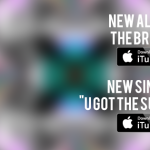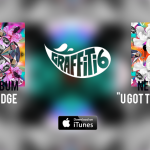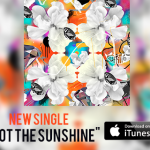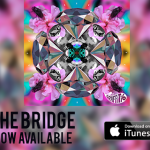I recently wrote a piece for Billboard in which I analyzed the first week of airplay for Beats 1, Apple Music’s 24/7 worldwide radio station. While Apple provides playlists (through Apple Music’s Connect feature) for the programs curated by hosts like Zane Lowe and specials like St. Vincent’s Mixtape Delivery Service and Q-Tip’s Abstract Radio, there is no native way to see a list of everything on Beats 1’s airwaves.
Continue reading “How to view, search, and analyze the Beats 1 playlist”
In recent years, nominees for the most prominent, cross-genre GRAMMY Awards have been announced on a primetime CBS special, with popular artists like Taylor Swift, Macklemore & Ryan Lewis, Miguel, Keith Urban, and Lorde turning the nomination ceremony into a live concert performance. For its upcoming 57th season, the GRAMMYs, likely in attempt to keep up with evolving digital trends, made an adjustment to that formula, adapting the CBS broadcast into a holiday-themed concert special called A Very GRAMMY Christmas with only one award announcement: the prestigious Album Of The Year. As for the rest of the other 82 categories recognized by the Recording Academy committee, they were rolled out throughout the day on daytime television and radio properties and by a number of artists’ Twitter accounts.
Beginning at 8:30 AM Eastern, Pharrell and Ed Sheeran visited the set of CBS This Morning, announcing the nominees for Best Pop Vocal Album, Best Country Album, Best Urban Contemporary Album, and general field category Record Of The Year. Shortly thereafter, Ryan Seacrest announced the nominees for Best Pop Solo Performance. After announcing a few awards themselves on the @TheGRAMMYs Twitter account, announcement duties were turned over to popular artists such as Alanis Morissette and Jared Leto, as well as media personalities including Mario Lopez and Entertainment Tonight‘s Nancy O’Dell, all using Twitter’s native video function. A flurry of tweets from nearly twenty-five different outlets followed through 2:00 PM Eastern, at which point all of the nominations excluding Album Of The Year were posted on GRAMMY.com, which previously occurred at the close of the primetime nomination special.
This social media-fueled campaign is another step toward modernizing the awards process for the Recording Academy, in a field now expanding with awards shows from big players like MTV, Billboard, YouTube, and iHeartRadio that have taken advantage of creative social media usage. As Maura Johnston pointed out in the Boston Globe, MTV previously used Snapchat to preview this year’s Video Music Awards nominees, while Billboard partnered with Tumblr to provide nearly-instant GIFs of the 2013 Billboard Music Awards. By utilizing the well-followed accounts of popular media figures, the GRAMMYs are able to spread the news of their nominees across a much wider audience than could have been available through solely their own media channels.
On the other hand, the inability to pre-determine where nomination announcements were coming from made the hours-long process a bit difficult to follow at times. The official GRAMMYs Twitter account dutifully retweeted each announcement after it was made on Twitter, but attempting to find each tweet amidst the regular buzz and reaction of the Twitter newsfeed added a lot of noise to the stream. With no roadmap or direction from the GRAMMYs account itself, those interested had to wait for their account to retweet each announcement, then parse the tweet and watch the video announcement to get a grasp of the artists and songs nominated. While this was a great first step, the campaign could have potentially been improved if @TheGRAMMYs had laid out a timetable of which accounts would be making announcements and in what order. Additionally, regular announcements of who was announcing the next category’s nominees could have added potential followers for the artists and media personalities involved, as those interested would flock to their accounts in wait of the next batch of nominees.
The 57th GRAMMY Awards air on February 8, 2015 on CBS. A full list of the nominees is available here excluding Album Of The Year, which will be announced at the conclusion of tonight’s A Very GRAMMY Christmas CBS special.
As part of a website redesign to market Graffiti6’s independently-released sophomore album, The Bridge, I created social media graphics to help promote the album release, as well as of that of single “U Got The Sunshine,” which was promoted in international markets. These graphics were posted as cover photos on the band’s Twitter and Facebook pages and as banners on the existing Graffiti6 website in the interim while the redesign was being completed. On Facebook and the website, they were accompanied by smartURL links to help track clicks and monetize purchases.
Tonight, I will depart from Detroit to Paris, France before arriving in Tours, my home for the next eight weeks. While in Tours, I will be staying with a host family and taking courses along with other MSU and international students at the Institut de Touraine. Experiencing French language and culture firsthand is bound to be a very fun and educational experience for me. In addition to my studies, we will also be embarking on several excursions, including day trips to Paris and Mont Saint-Michel and watching the Tour de France cycle through Tours during its 100th anniversary. While I can’t bring everyone along with me physically, I can do my best to document my travels online, so I’ll be using social media to share updates during the summer semester.
On y va! — let’s go!
Pictures
If you are an Instagram user, follow KurtTrowbridge for a steady feed of pictures while on the go. Once I receive my local phone in Tours, I should be able to share directly to Instagram when taking pictures on the phone; I will also be uploading pictures from my digital camera to Instagram using Dropbox as an intermediary program. Even if you aren’t on Instagram, you can easily see all of my photos from the trip: each of my uploaded pictures with the hashtag #msutours13 will appear in an auto-updating feed at the top of my France category page, thanks to a WordPress plugin called Instapress. More pictures will be uploaded to my Facebook page; feel free to follow or befriend me there as well.
Locations
While most people have moved on from Foursquare at this point, I still check in fairly regularly. Follow me to see where I’m going throughout France and maybe get a tip or two if you’re ever in the area. I’m also looking into displaying a map on the site that will show checkins that I can reference in posts – feel free to send me recommendations if you have a WordPress plugin or program that would accomplish such a map.
Posts
For the most quick (and likely least interesting) updates, I will be posting on Facebook and Twitter. More in-depth posts will be posted here, including photos and links when relevant. While these posts will be automatically shared to Facebook and Twitter, you can also get notifications for updates through this RSS feed or by selecting the “Notify me of new posts by email” option when commenting on a post.
Just over one month ago, Twitter launched its Twitter #Music website and iPhone app following the acquisition of music discovery site We Are Hunted. Now that the initial wave of hype and press coverage has dissolved, timelines have gone as quiet as before, with little adoption from industry figures or the general public and the app tumbling down iTunes app charts. Rather than declaring Twitter’s foray into a music service a flop so soon, however, I think there is still potential for Twitter #Music to become a useful and popular arm of the social network with a few changes and additions. Below are five suggestions that would provide more incentive for users and artists alike to continue using the platform to share and discover music.
1. Chart expansions: more genres, more services
Recently, Twitter #Music added ten genre-based charts to its existing Popular, Emerging, and Unearthed lists (along with new Superstars and Hunted charts). This is a good start for culling music into more specific subcategories, but additional charts could be used for more appropriate and in-depth classification. For example, the iTunes Store has 22 categories, including those like jazz, soul, and reggae that do not fit squarely into one of the ten pre-existing genres in #Music.
In addition to the genre charts, Twitter #Music’s five additional charts sort music of all genres based on popularity and virality, including those focused more on music discovery that helped We Are Hunted receive praise well before its acquisition. The original site also included a chart that displayed the Billboard Hot 100 with their own design and playback specifications. Reproducing such charts within the Twitter #Music experience would allow users to find and follow artists more easily, and since it has already built relationships with iTunes, Rdio, and Spotify, reframing theirs within the app would likely be a simplified process. This relationship could work both ways: charts could be saved or regularly published as Rdio and Spotify playlists (something that Billboard already does with Spotify, Rdio, and MySpace), encouraging users to visit streaming sites in addition to #Music. This would require the service to move past its one-song-per-artist ideology, however, which may explain the lack of a Billboard chart carried over from We Are Hunted to Twitter #Music.
2. Tastemaker discovery and recommendations
Much of the focus of the Twitter #Music experience is on artists. The search function only delivers results for artists; each artist is displayed with only one song, favoring the try-before-you-buy approach of offering one track with the option to dig further on another service at your own leisure; and the only Twitter users that can be followed are the artists themselves. With Twitter being inherently social, however, its music service would benefit from adapting the traits that have encouraged social activity by including a focus on end users as well. Interacting with fellow Twitter users between the social network and the music app is surprisingly a one-way street: tweets with the #nowplaying or #np hashtags get pulled into the #Music app, but #Music does not currently show Twitter users who have shared certain songs, and in order to see what another user is sharing within the app, the only option is to manually replace the username in the URL of a profile.
One such potential method of focusing on user interaction is in the artist listings throughout the app. Currently, no further data is presented beyond the artist and their chosen song. Why not bring Twitter users into the mix? Much like Twitter search results reveal users who are tweeting about a certain search term, clicking on an artist could display a timeline of the tweets including the artist and the #nowplaying (or #np) hashtag. Not only would this provide data about the fans of an artist, but it would give users more incentive to share music on Twitter, lending to the heard-it-first principle that powers music blogs and sites like TastemakerX.
Additionally, a central method for Twitter users to recommend artists to one another would be beneficial to music fans and musicians alike. Spotify and Rdio both offer this option already, but integrating a recommendation-sharing system within #Music with the potential to auto-tweet to users’ Twitter feeds and use Twitter Cards to link into the app would reach more users and likely provide higher engagement between all parties. As users discover music, direct sharing to friends would give them the appeal of being a tastemaker, while the inclusion of the artist’s Twitter handle in the recommendation would encourage and ease the act of following them.
3. Separate follow lists between Twitter and #Music
When first exploring Twitter #Music after its public release, I was excited to find that I could follow artists on the app without having them inserted into my Twitter timeline as well…or so I thought. Under the current setup, if I want to follow an artist’s music tastes in my Twitter #Music feed, I can only follow them on Twitter, with no ability to filter general tweets from those with music links. For artists that I only want to follow for their music taste, an additional follow option within Twitter #Music would allow such a separation. This would be beneficial in the same way for following users with good music recommendations as outlined in the previous paragraph, with the option to follow all of the tastemaker’s tweets on Twitter at each user’s own discretion.
4. Expand search beyond artists
As previously mentioned, Twitter #Music’s search option only displays results for artists, with no option to search songs, users, or tweets. Should the details of users’ tweets be included in a future update to the app, an expanded search would enable users to find music based on certain search terms and hashtags. Much like Songza offers a “Music Concierge” option for curation based on a given day and mood, searching for “#musicmonday” or “study music” could offer the same results on Twitter, with curation provided by users rather than being programmed by developers. In the same way, music curated around trends based on current events could provide a soundtrack to the day. While #nowplaying and #np are good choices for Twitter #Music to begin sorting tweets, a search expansion would allow users to define their own methods for filter music and discover artists based on more specific criteria.
5. Connect to more artists and audio services
First created in September 2011, the @TwitterMusic department has worked with artists to get them on Twitter and to use the platform for connecting with users and marketing new projects, among other things. However, there are still a few noticeable gaps with artists who have yet to join the social network. For example, while the buzz for Daft Punk has grown to a deafening roar up to this week’s album release, they are completely invisible on Twitter #Music, regardless of how much they are being properly shared by users, merely because they do not have an official presence on the site. While it is extremely implausible to suggest all artists will join Twitter, the Twitter #Music app could compensate for missing artists by providing a basic profile with data sourced from iTunes, which could be filled out if the artist joined Twitter at a later date. This would ensure the accuracy of the app’s charts even despite artists missing from the service, and might even encourage artists to sign up for Twitter to benefit from the additional exposure on the app.
While it would require creating additional partnerships, #Music would also benefit from adding more audio services for users to stream content. In particular, We Are Hunted sourced its audio from SoundCloud before it was acquired by Twitter, so its absence is somewhat peculiar. Unlike Spotify and Rdio, SoundCloud does not require a subscription for users to stream full audio, which would make music easier to hear through the app should it be included as well. The addition of Amazon MP3 as a retailer and streaming services like MOG, VEVO, and YouTube would also improve user accessibility to the music shared within the app. Naturally, deals with record labels would have to be reached beforehand, which is likely causing the current delay in adding such options.
With limited adoption and a lack of updates to the service thus far, many people have already written off Twitter #Music as a failure. However, with only a month of history written since its public release, there is still a long path of progress before #Music, making it unnecessary to throw in the towel so soon. In the same way, it took time for Twitter itself to grow and build its now-massive membership. Updates including additional social integration, search capabilities, and compatibility with new music services would help Twitter’s newest service to become more accessible, user-friendly, and functional for music discovery. Despite the death bells already ringing, Twitter #Music isn’t dead just yet — for now, let the music play.



